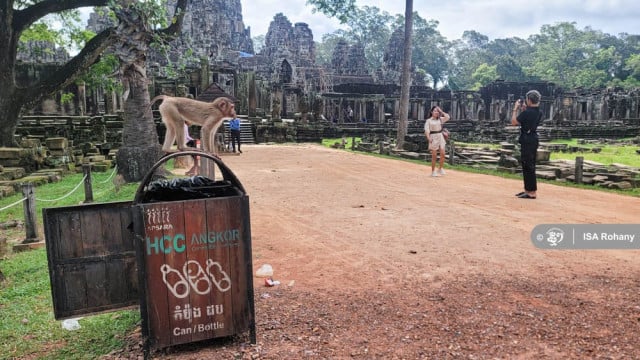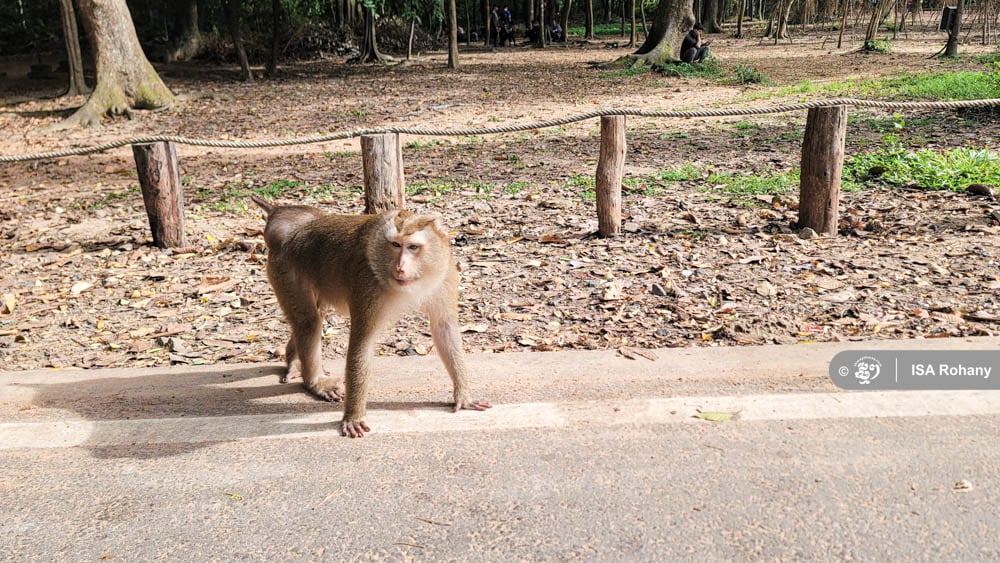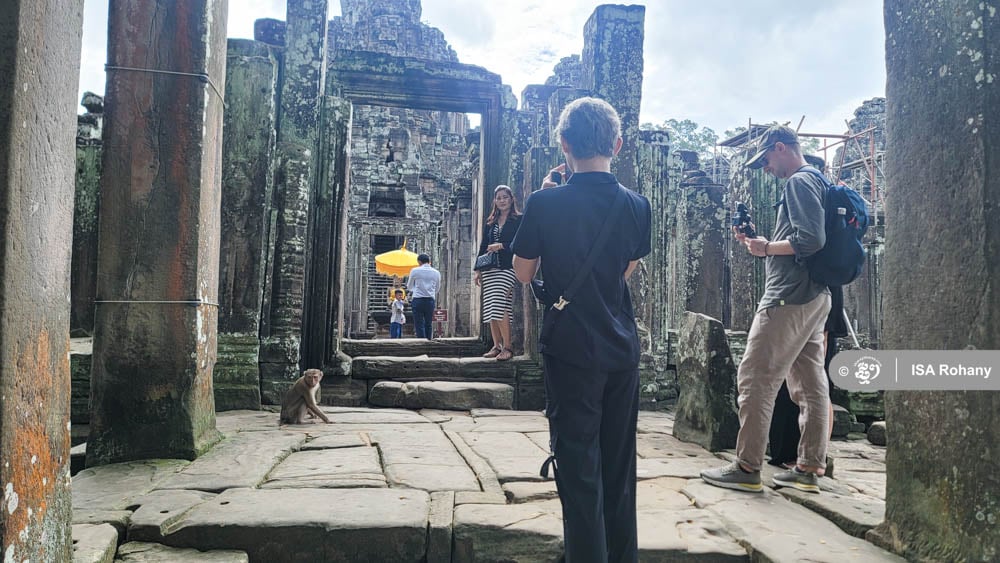Monkeys in Angkor Park: Aggressive or Just Hungry?

- By Isa Rohany
- September 4, 2023 3:00 PM
Siem Reap — In addition to coming face to face with spectacular monuments in a country whose people’s way of life may at times seem unusual to them, tourists in Angkor Archeological Park have recently had to cope with monkeys attempting to grab their food or drinks.
This tends to happen mainly at Angkor Wat and the Bayon temple where the monkeys’ actions have nearly turned offensive, which has raised the question: Are they just hungry or have they turned aggressive?
For decades, incidents involving monkeys biting visitors, both national and international, have occasionally taken place.
However, a 39-year-old Thai visitor was recently bitten by a monkey at the Angkor Wat temple before the tourist agent could intervene. The visitor ended up with a light injury on his wrist.

Lek Kimlin, the tourism agent team captain at Angkor Wat, said that the incident occurred when the visitor refused to give some of his food to the monkey that was coming for it. In 2023, there were 20 incidents of monkey bites in the area of Angkor Wat and the walled city of Angkor Thom.
Food sellers near Angkor Wat who preferred not to have their names mentioned admitted being annoyed by those monkeys that they often have to chase away after they have stolen their food. However, not all monkeys are the same. As sellers pointed out, while some are annoying, others are timid. “Don’t try to lure them,” a seller said. “If they are about to grab something, just give it to them.”
Some tourists are intrigued by their presence and often buy fruits to attract the monkeys. Around the Bayon temple, fruit vendors tend to gather as visitors often offer fruits at the shrine.
People’s Good Intentions May Have Altered Monkeys’ Behavior
Have these actions by the tourists changed the behaviour of the monkeys? Unsurprisingly, these animals were often finding food in the forest.
While having a group conversation at a restoration site near the Bayon temple, Han Mach, a temple restorer responsible for mixing mortar, said he believed that having tourists and photographers give them food out of kindness or for commercial purposes does contribute to changing monkeys’ behaviors.
“Before, the monkeys were mostly living in the forest," Mach said. “Since they are often being given easy food, the monkeys become lazier [than when they] live on their own.” Mach has come into contact with monkeys three times, but this did not lead to serious injuries, he said.

A 66-year-old lady and other villagers in the area said they keep sticks nearby to scare off the monkeys, especially around mealtimes.
Nhok Sakim, a tourism agent at the Bayon temple said she was tired of having the monkeys around. “Sometimes, they push away temple stones or shake the information signs,” she said. In addition to having to look after visitors, this tourist agent said she has to pay extra attention to the monkeys as they might steal phones or mess up the trash cans.
In the meantime, the APSARA National Authority, in collaboration with the Forestry Administration, has been relocating aggressive monkeys from Angkor Park to the Phnom Tamao Zoo and Wildlife Rescue Center in Takeo province.
Some people on social media have criticised the action as being inhuman, saying that taking some monkeys away would leave younger ones unattended.
Long Kosal, a spokesperson for APSARA Authority, said that only the aggressive monkeys who might create trouble for tourists or other monkeys were relocated.
Conducted in Khmer for ThmeyThmey News, the article was translated by Ky Chamna for Cambodianess News.
To read the Khmer version, click here.















